This article provides a brief synopsis of the Iranian air force in 1924-1941. For a full history, with references and footnotes, readers are referred to Farrokh’s third text Iran at War: 1500-1988 in pages 267, 271-281 (accompanying footnotes in pages 443-445). Readers are also referred to the following article:
The Junkers Services
The Junkers Company had begun operating a civilian air service, providing flights between Tehran, Mashad, Shiraz, Bushehr, Anzali, Baku, western India and Turkey. Junkers aircraft and personnel had been deployed for reconnaissance flights and possibly transport for the Iranian air service in 1924. In that same year, Iran was to take delivery of ten combat aircraft from France, Germany and Russia.
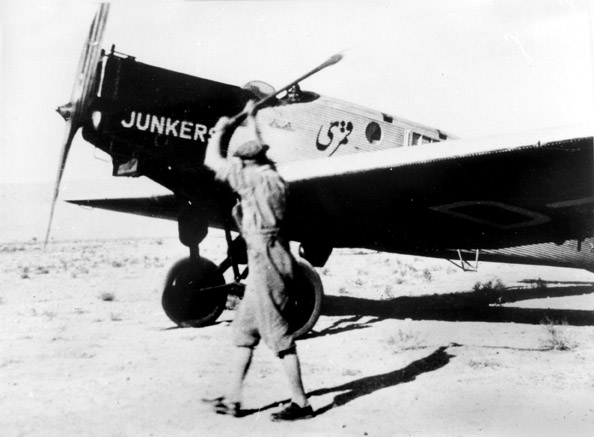 A Junkers W 33 D-1684 of Junkers-Luftverkehr bearing the Persian inscription of “Qomri” (Persian: Ringdove). It is not clear what the man with the stick is doing; perhaps he is guiding the aircraft towards a parking position (Picture Source: Volker Koos & Lennart Andersson).
A Junkers W 33 D-1684 of Junkers-Luftverkehr bearing the Persian inscription of “Qomri” (Persian: Ringdove). It is not clear what the man with the stick is doing; perhaps he is guiding the aircraft towards a parking position (Picture Source: Volker Koos & Lennart Andersson).
Official Birth of the Iranian Air Force
The official formation of a distinct Iranian air arm can be officially dated to June 1, 1924. On that day, Reza Khan (not yet Shah on that year) issued a directive separating the Air Office of the Iranian armed services into a distinct branch wholly independent of the army. By June and August 1924, Iranian pilots were training in France and Russia. The air service however had to wait another two years before being officially recognized as the Iranian Air Force on February 24, 1926. By that same year, the Iranian air service possessed a modest total of just three Junkers F.13 aircraft.
By 1926 the number of aircraft in the Iranian air force inventory doubled to 20 machines. This increased to 30 with the arrival of 10 Russian Polikarpov R-5 aircraft by June 1933.
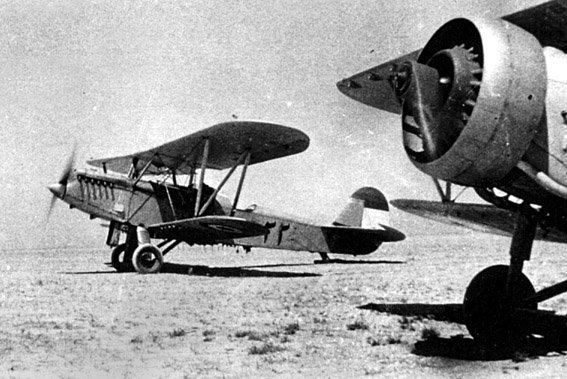 Two of the ten Polikarpov R-5 reconnaissance aircraft purchased from the Soviet Union in 1933; above is aircraft number 33 preparing to take off (Picture Source: Lennart Andersson). Iranian pilots however, disliked this aircraft’s handling characteristics and the type remained unpopular during its tenure with the nascent Iranian air force.
Two of the ten Polikarpov R-5 reconnaissance aircraft purchased from the Soviet Union in 1933; above is aircraft number 33 preparing to take off (Picture Source: Lennart Andersson). Iranian pilots however, disliked this aircraft’s handling characteristics and the type remained unpopular during its tenure with the nascent Iranian air force.
Aircraft Repair and Manufacturing
The Iranians had worked hard to develop their indigenous aircraft maintenance and production facilities since the early days of Reza Shah. By August 1932 technical schools for the repair of aircraft and pilot training had been established.
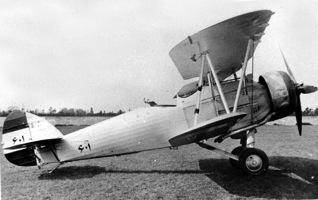 An Iranian Air Force Hawker Hind No. 601 before the Second World War. Iran received 35 of these by the fall of 1938 with the Shahbaz Aircraft manufacturing plant in Tehran producing another 20 Hawker Hinds in Iran (Photo Source: Artiklar)
An Iranian Air Force Hawker Hind No. 601 before the Second World War. Iran received 35 of these by the fall of 1938 with the Shahbaz Aircraft manufacturing plant in Tehran producing another 20 Hawker Hinds in Iran (Photo Source: Artiklar)
More strides were made in 1935. Production machinery for aircraft manufacturing arrived from England, France and the Pratt and Whitney Company of the United States.
The Shahbaz Aircraft manufacturing plant at Doshan Tappeh was formally inaugurated on September 12, 1936. The plant produced ten Hawker Audex combat aircraft that same year under license. Plans were underway to produce more combat aircraft but the onset of World War Two put a halt to these projects.
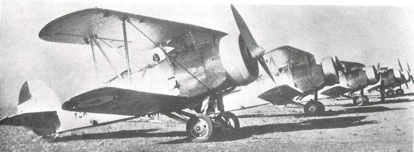 A squadron of Hawker Audax bombers, close air support and reconnaissance aircraft stationed in an airfield in southern Tehran prior to the outbreak of World War Two (Photo Source: Cooper, T. & Bishop, F. (2000). Iran-Iraq War in the Air 1980-1988. Atglen, PA: Shiffer Military History, p.11). Ten of these were built in Iran under license in 1936 by the Shahbaz Aircraft manufacturing plant in Tehran. Sixty of these had already been delivered to Iran in 1934. A number of these flew against British and Russian forces during their invasion of Iran in August 1941.
A squadron of Hawker Audax bombers, close air support and reconnaissance aircraft stationed in an airfield in southern Tehran prior to the outbreak of World War Two (Photo Source: Cooper, T. & Bishop, F. (2000). Iran-Iraq War in the Air 1980-1988. Atglen, PA: Shiffer Military History, p.11). Ten of these were built in Iran under license in 1936 by the Shahbaz Aircraft manufacturing plant in Tehran. Sixty of these had already been delivered to Iran in 1934. A number of these flew against British and Russian forces during their invasion of Iran in August 1941.
The Anglo-Soviet Invasion of Iran (August 25 – September 17, 1941)
By the onset of World War Two Iran possessed 122 outdated Hawker series combat aircraft (Audax, Hind and Fury) with only forty of these fit for combat when the Anglo-Soviets invaded Iran in August 1941. Iran also had (approximately) another 160 aircraft (i.e. trainers, transport, etc.) prior to the outbreak of World War Two. The Iranian air force had a total of 1000 trained personnel at the eve of the Anglo-Soviet invasion. Iran’s obsolete aircraft were distributed to the four major airbases in Tehran, Ahvaz, Tabriz and Mashad.
 An Iranian air force French-manufactured Breguet 19 reconnaissance and bomber aircraft. The aircraft delivered to Iran in 1925 were powered by a 450 hp engine. The aircraft was capable of 145 miles per hour and could fly at a maximum ceiling of 21,982 feet (Photo Source at left: Matofi, 1999, p.1054; Color Draft at right: PlaneTalk Forum).
An Iranian air force French-manufactured Breguet 19 reconnaissance and bomber aircraft. The aircraft delivered to Iran in 1925 were powered by a 450 hp engine. The aircraft was capable of 145 miles per hour and could fly at a maximum ceiling of 21,982 feet (Photo Source at left: Matofi, 1999, p.1054; Color Draft at right: PlaneTalk Forum).
In practice only the ten P-40 Curtis aircraft at Ahvaz air base were capable of challenging British and Russian aircraft, but only one of these had been assembled from its kits. This was flown by an American pilot-mechanic to Iraq as soon as the Anglo-Soviets invaded in August 1941.
The total numbers of actual combat and training aircraft in the Iranian air force are believed to have been as follows (numbers subject to revision with further research data): The Ahvaz, Tabriz and Mashad air bases were decommissioned after the Anglo-Soviet invasion of Iran in August 1941 but reconstituted after the Second World War.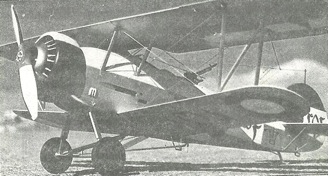 Iranian Hawker Fury no. 482 before the war (Photo Source: Matofi, A., 1999, Tarikh-e-Chahar Hezar Sal-e Artesh-e Iran: Az Tamadon-e Elam ta 1320 Khorsheedi, Jang-e- Iran va Araqh
Iranian Hawker Fury no. 482 before the war (Photo Source: Matofi, A., 1999, Tarikh-e-Chahar Hezar Sal-e Artesh-e Iran: Az Tamadon-e Elam ta 1320 Khorsheedi, Jang-e- Iran va Araqh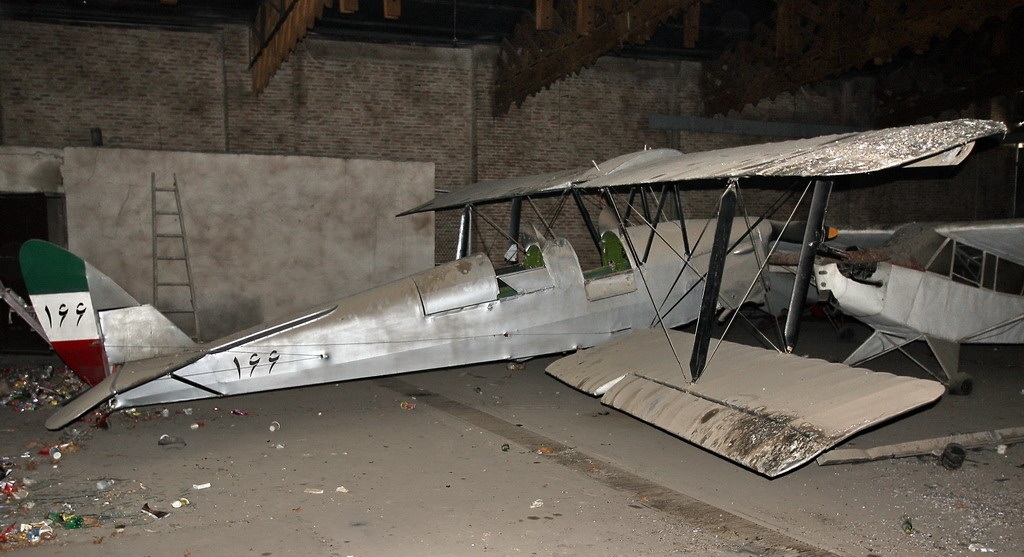 A vintage Shahbaz Manufactured De Havilland DH-82A Tiger Moth II aircraft housed at an Iranian hangar; this is in desperate need of restoration (Photo Source: Copyright “Babak T” – available at Airliners.Net).
A vintage Shahbaz Manufactured De Havilland DH-82A Tiger Moth II aircraft housed at an Iranian hangar; this is in desperate need of restoration (Photo Source: Copyright “Babak T” – available at Airliners.Net).




